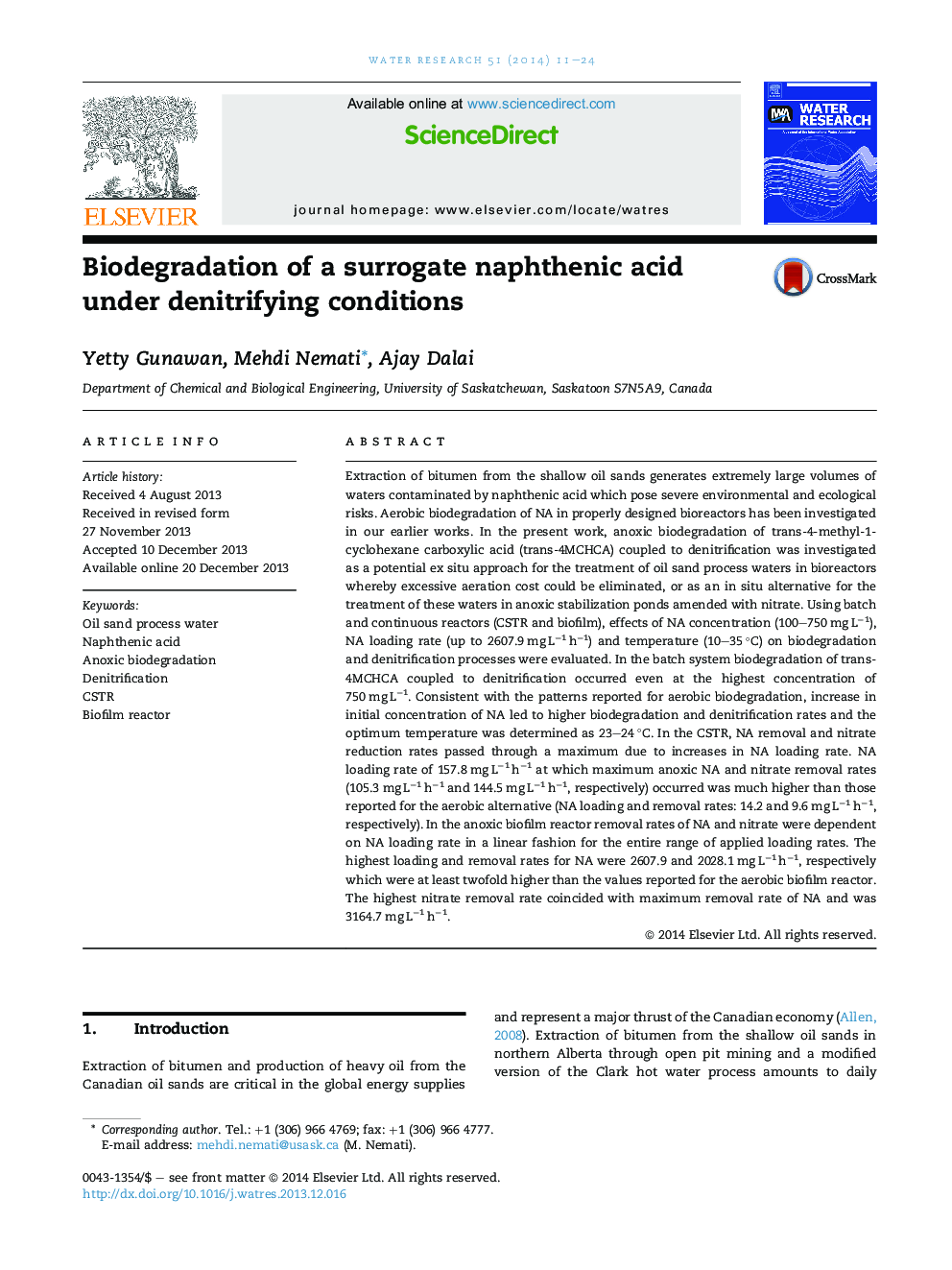| کد مقاله | کد نشریه | سال انتشار | مقاله انگلیسی | نسخه تمام متن |
|---|---|---|---|---|
| 4481623 | 1623117 | 2014 | 14 صفحه PDF | دانلود رایگان |
• First detailed study on anoxic biodegradation of naphthenic acids.
• Effective biodegradation and nitrate reduction in batch and continuous anoxic bioreactors.
• Anoxic biodegradations rates were comparable or higher than aerobic rates.
• Potential use as an effective ex situ or in situ process for treatment of oil sand process waters.
Extraction of bitumen from the shallow oil sands generates extremely large volumes of waters contaminated by naphthenic acid which pose severe environmental and ecological risks. Aerobic biodegradation of NA in properly designed bioreactors has been investigated in our earlier works. In the present work, anoxic biodegradation of trans-4-methyl-1-cyclohexane carboxylic acid (trans-4MCHCA) coupled to denitrification was investigated as a potential ex situ approach for the treatment of oil sand process waters in bioreactors whereby excessive aeration cost could be eliminated, or as an in situ alternative for the treatment of these waters in anoxic stabilization ponds amended with nitrate. Using batch and continuous reactors (CSTR and biofilm), effects of NA concentration (100–750 mg L−1), NA loading rate (up to 2607.9 mg L−1 h−1) and temperature (10–35 °C) on biodegradation and denitrification processes were evaluated. In the batch system biodegradation of trans-4MCHCA coupled to denitrification occurred even at the highest concentration of 750 mg L−1. Consistent with the patterns reported for aerobic biodegradation, increase in initial concentration of NA led to higher biodegradation and denitrification rates and the optimum temperature was determined as 23–24 °C. In the CSTR, NA removal and nitrate reduction rates passed through a maximum due to increases in NA loading rate. NA loading rate of 157.8 mg L−1 h−1 at which maximum anoxic NA and nitrate removal rates (105.3 mg L−1 h−1 and 144.5 mg L−1 h−1, respectively) occurred was much higher than those reported for the aerobic alternative (NA loading and removal rates: 14.2 and 9.6 mg L−1 h−1, respectively). In the anoxic biofilm reactor removal rates of NA and nitrate were dependent on NA loading rate in a linear fashion for the entire range of applied loading rates. The highest loading and removal rates for NA were 2607.9 and 2028.1 mg L−1 h−1, respectively which were at least twofold higher than the values reported for the aerobic biofilm reactor. The highest nitrate removal rate coincided with maximum removal rate of NA and was 3164.7 mg L−1 h−1.
Comparison of aerobic and anaerobic biodegradations of naphthenic acids in CSTR and biofilm reactors.Figure optionsDownload high-quality image (104 K)Download as PowerPoint slide
Journal: Water Research - Volume 51, 15 March 2014, Pages 11–24
